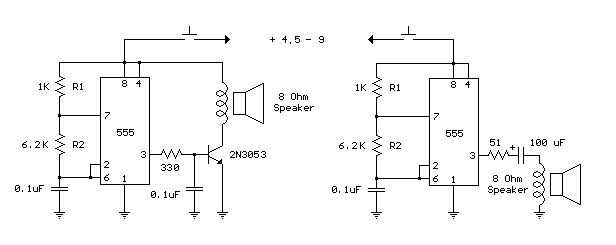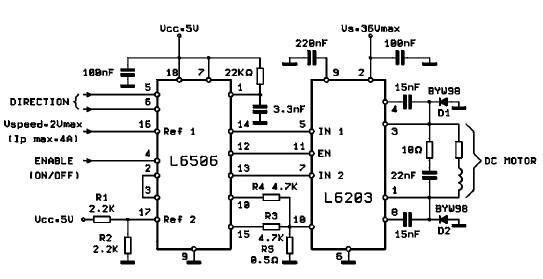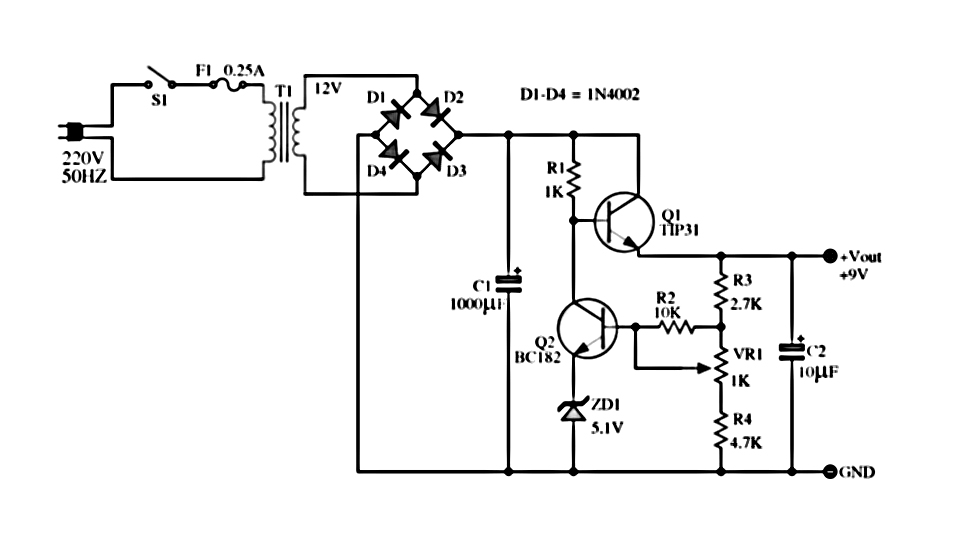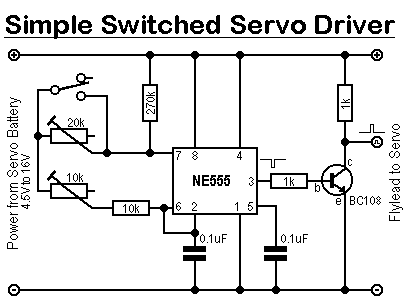
simple intercom circuit for home communication
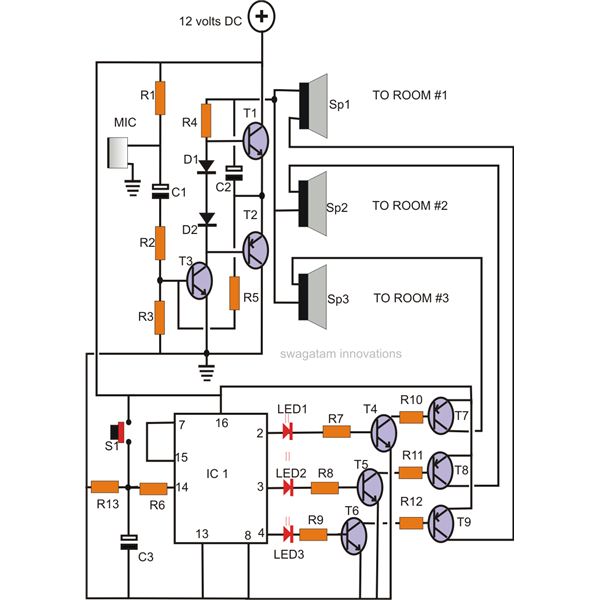
A home intercom system can be constructed using a versatile circuit design. This system allows communication across up to ten different locations or rooms discreetly. It utilizes a single changeover switch for selecting the desired location, replacing the traditional keypad system. All of these enhancements can be achieved with commonly available, low-cost electronic components.
The proposed home intercom system circuit is designed to facilitate clear and efficient communication among multiple rooms within a residence. The core of the system includes a central control unit that interfaces with individual intercom units located in each room. The intercom units are equipped with a microphone and speaker for two-way communication, allowing users to speak and listen without the need for physical movement between rooms.
The use of a single changeover switch simplifies the user interface, enabling easy selection of the target intercom unit. This is a significant improvement over traditional systems that rely on complex keypads, which can be cumbersome and less intuitive. The switch is connected to a multiplexer that routes audio signals to the selected intercom unit while ensuring that the other units remain inactive, thus maintaining privacy.
The circuit can be powered by a standard low-voltage power supply, ensuring safety and energy efficiency. The individual intercom units can be connected to the central unit using standard wiring, making installation straightforward and cost-effective. The components used in the circuit, such as operational amplifiers for audio processing, resistors, capacitors, and the changeover switch, are readily available and inexpensive, making this project accessible for hobbyists and DIY enthusiasts.
Additional features can be integrated into the system, such as LED indicators to show which intercom unit is currently active or even a simple volume control for each unit, enhancing user experience. The overall design emphasizes reliability and ease of use, making it an ideal solution for home communication needs.Did you know you can build your own home intercom? Read our instructions and find a circuit of a versatile home intercom system. The unit is able to communicate to as many as ten different locations or rooms discretely and incorporates a single change over switch for the required selections, instead of the age-old keypad system. And all these improvements are set-forth using ordinary low cost electronic components.. 🔗 External reference
The proposed home intercom system circuit is designed to facilitate clear and efficient communication among multiple rooms within a residence. The core of the system includes a central control unit that interfaces with individual intercom units located in each room. The intercom units are equipped with a microphone and speaker for two-way communication, allowing users to speak and listen without the need for physical movement between rooms.
The use of a single changeover switch simplifies the user interface, enabling easy selection of the target intercom unit. This is a significant improvement over traditional systems that rely on complex keypads, which can be cumbersome and less intuitive. The switch is connected to a multiplexer that routes audio signals to the selected intercom unit while ensuring that the other units remain inactive, thus maintaining privacy.
The circuit can be powered by a standard low-voltage power supply, ensuring safety and energy efficiency. The individual intercom units can be connected to the central unit using standard wiring, making installation straightforward and cost-effective. The components used in the circuit, such as operational amplifiers for audio processing, resistors, capacitors, and the changeover switch, are readily available and inexpensive, making this project accessible for hobbyists and DIY enthusiasts.
Additional features can be integrated into the system, such as LED indicators to show which intercom unit is currently active or even a simple volume control for each unit, enhancing user experience. The overall design emphasizes reliability and ease of use, making it an ideal solution for home communication needs.Did you know you can build your own home intercom? Read our instructions and find a circuit of a versatile home intercom system. The unit is able to communicate to as many as ten different locations or rooms discretely and incorporates a single change over switch for the required selections, instead of the age-old keypad system. And all these improvements are set-forth using ordinary low cost electronic components.. 🔗 External reference
Warning: include(partials/cookie-banner.php): Failed to open stream: Permission denied in /var/www/html/nextgr/view-circuit.php on line 713
Warning: include(): Failed opening 'partials/cookie-banner.php' for inclusion (include_path='.:/usr/share/php') in /var/www/html/nextgr/view-circuit.php on line 713
